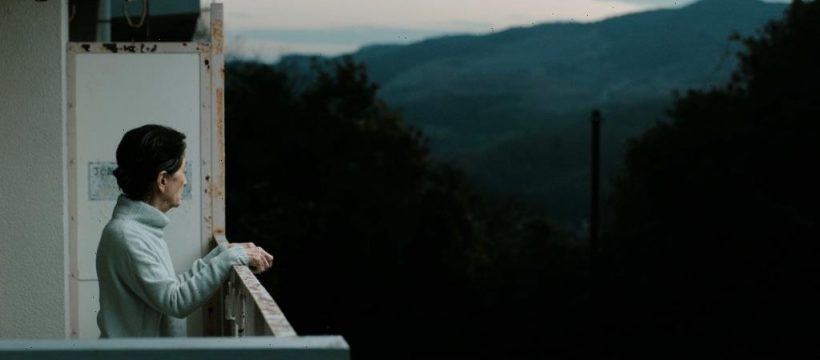Tokyo has been the nerve center of Japan’s movie industry for more than a century. Kyoto, the country’s ancient capital, has a proud filmmaking tradition, especially for samurai period films, but all the major film companies — Toho, Toei, Shochiku, Nikkatsu and Kadokawa — are headquartered in Tokyo and operate studios in either Tokyo or the Tokyo metro region. Locations in Tokyo, Hiroshima and other Japanese regions also feature prominently in Oscar-nominated “Drive My Car.”
This doesn’t mean that, outside the studio confines, Tokyo is a particularly easy place to film. One veteran director and line producer who has worked in both the U.S. and Japan, and for professional reasons prefers to remain anonymous, says, “shooting in Tokyo is harder than other cities, say New York.” One reason: the Tokyo film office, in contrast to its New York counterpart, does not help productions in obtaining permits. “They just have lists of possible locations. You mostly obtain permits for shooting in the street from the police, but they are not so cooperative and the forms are kind of complicated.”
As a result, permits typically take three to five days to process. “So when a foreign crew asks us to shoot at some new location tomorrow, we always get into trouble, because you can’t obtain permits at such short notice.” The lesson: “Plan ahead and don’t expect to expedite the process by paying under the table [bribe], as you can in some Southeast Asian countries. Japan is not a flexible country, and as far as the film office and the police are concerned, the procedures are very formal.”
Also, permits to shoot in such popular Tokyo locations such as the Kabukicho red-light district in Shinjuku and the famous scramble intersection in Shibuya, are all but impossible to come by. “So you need to shoot on the fly,” the producer advises. “However, in some dangerous areas like Kabukicho, you have to be prepared to be harassed by the yakuza,” Japan’s home-grown gangsters.
One common workaround to the difficulties of filming in Tokyo is to move production to outlying areas, where bureaucratic barriers are not as high. Eiko Mizuno Gray, a veteran producer whose company Loaded Films recently completed principal photography on the dystopian sci-fi “Plan 75,” calls shooting in Tokyo’s 23 wards “still a challenge in public areas.”
In filming “Plan 75,” which was developed from a segment of the 2018 anthology “Ten Years Japan,” director Hayakawa Chie and her crew spent only six of the 21-day shoot in Tokyo proper. Gray notes that film commissions in Hino, a Tokyo suburb, and Fujisawa, a city in neighboring Kanagawa prefecture, “were very supportive with location permissions, and were welcoming to us during the pandemic.”
Also, she adds, “The surrounding prefectures of Kanagawa and Chiba offered perfect locations for director Hayakawa’s vision.”
But when locations in central Tokyo are essential, she does not recommend guerrilla-style shooting, “even if it seems tempting.” (See the above comment about the yakuza.) Instead, she advises “hiring a local production company with feature film experience in Tokyo.” And if the budget is an issue, other locations can double for Tokyo. “Even major filmmakers here do this.”
Since the start of the pandemic, Tokyo has been a nexus of infections, prompting a state of emergency declaration that, in April 2020, closed theaters and other businesses catering to the general public for one month. Government authorities, however, never resorted to draconian lockdowns due to legal restraints, relying instead on guidelines and voluntary compliance.
Nonetheless, in contrast to Hollywood, where high infection rates forced production shutdowns, the Japanese film industry has been able to keep cameras rolling in Tokyo and elsewhere with few interruptions, while implementing safeguards that have kept cast and crew relatively safe.
In filming “Plan 75,” says Gray, “Everybody was PCR-tested before and during the shoot, and reported via Google forms every day on their health condition, including their temperature and the health of family members.”
On the set, crew members checked temperatures, disinfected surfaces and ventilated rooms, sometimes using special fans. Masks were mandatory, with actors removing them only just before a take. Extras were tested before coming to the set and visitors were required to take a rapid antigen test on their arrival.
The outcome: Zero infections during the Dec. 14-Jan. 17 shoot. “One person was infected before they came to the set so we had to re-hire for that position and managed to keep the set COVID-free,” Gray notes.
For nearly two years, however, foreign productions have been effectively shut out of Japan by the official policy of limiting entry to Japanese nationals and foreign residents. New arrivals are banned, with few exceptions, a stance popular with the Japanese public, if protested by everyone from foreign students planning to study at Japanese universities to Mikitani Hiroshi, the billionaire CEO of e-commerce giant Rakuten, who has called the curbs “only a minus for the economy.”
Is change in the offing? At a press conference on Feb. 4 chief cabinet secretary Matsuno Hirokazu said that the government would consider opening the border “taking into account the infection situation in Japan and overseas, the characteristics of the omicron variant, and the impact of the restrictions.”
Translation: Don’t hold your breath.
Source: Read Full Article
